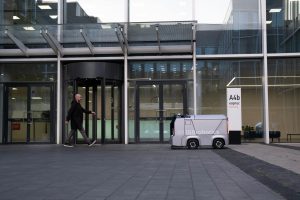EV Charging Infrastructure: Overcoming Range Anxiety
Electric vehicles (EVs) have been gaining traction in recent years as the world shifts towards cleaner and more sustainable modes of transportation. With their zero emissions and lower operating costs, EVs are becoming an attractive alternative to traditional gasoline-powered vehicles. However, one of the biggest concerns for potential EV owners is range anxiety – the fear of running out of battery power and being stranded on the road. This fear is one of the main barriers to the widespread adoption of EVs. But fear not, as the growth of EV charging infrastructure is helping to overcome this anxiety and pave the way towards a greener future.
Understanding Range Anxiety
Range anxiety is a real concern for many drivers, and it stems from the limited range of current EVs compared to gasoline-powered vehicles. While internal combustion engine (ICE) vehicles can travel hundreds of miles on a full tank of gas, most EVs have a range of around 200-300 miles on a single charge. This difference in range can make EV owners worry about whether they will have enough charge to complete their journey, especially on longer trips.
Moreover, the availability of charging stations is still relatively limited, making it challenging to find a place to charge up when needed. This lack of infrastructure compounds range anxiety, as drivers may worry about being stranded without a charging station nearby.
The Growth of EV Charging Infrastructure
The good news is that the EV charging infrastructure is rapidly expanding, making range anxiety less of a concern for EV owners. According to the International Energy Agency (IEA), the global EV charging stations’ number is expected to reach over 40 million by 2030, up from just over one million in 2017. This significant growth is driven by government initiatives, private investments, and the increasing demand for EVs.
Government Initiatives
Many governments around the world are implementing policies and incentives to promote the adoption of EVs. For example, the UK government has pledged to ban the sale of new gasoline and diesel cars by 2030 and has committed to investing millions of pounds in EV charging infrastructure. In the US, President Biden has proposed a $174 billion plan to boost the production and adoption of EVs, with a focus on expanding the network of charging stations.
Private Investments
Private companies are also contributing to the growth of EV charging infrastructure. Major automakers, such as Tesla, Nissan, and Ford, are installing their own charging stations, making it more convenient for their customers to charge their EVs. Various startups are also emerging in the EV charging sector, with innovative solutions to expand the network of charging stations, such as mobile charging units and battery swapping stations.
Increasing Demand for EVs
The increasing demand for EVs is another driving force behind the growth of EV charging infrastructure. As more people make the switch to electric vehicles, the need for more charging stations becomes evident. This demand will only continue to increase as more countries set targets for phasing out gasoline and diesel vehicles, and automakers invest more in EV production.
Types of EV Charging Stations
There are currently three types of EV charging stations – Level 1, Level 2, and Level 3 (also known as DC fast chargers). Each type of station provides a different charging speed, with Level 3 chargers being the fastest, capable of providing a full charge in around 30 minutes.
Level 1 Charging Stations
Level 1 charging stations use a standard household outlet (120 volts) and are the slowest option, providing around 4-5 miles of range per hour of charging. They are usually installed in an EV owner’s home or in public places where the vehicle will be parked for an extended period.
Level 2 Charging Stations
Level 2 charging stations use a 240-volt outlet and offer faster charging than Level 1, providing around 25 miles of range per hour. These chargers are typically found in workplaces, commercial buildings, and public charging stations.
Level 3 Charging Stations (DC Fast Chargers)
Level 3 chargers use direct current instead of alternating current, making them the fastest option, providing around 200 miles of range in 30 minutes of charging. These chargers are more expensive to install and are typically found on major highways or in commercial areas where drivers need a quick top-up.
Overcoming Range Anxiety
The expansion of the EV charging infrastructure is instrumental in overcoming range anxiety. With a growing number of charging stations available, EV drivers can now plan their trips without worrying about running out of charge. Mapping tools and smartphone apps can help EV owners locate nearby charging stations and plan their route accordingly.
Further advancements in charging technology, such as wireless charging and ultra-fast chargers, are also being developed to make charging even more convenient and efficient. As the EV charging infrastructure continues to grow and evolve, range anxiety will become a thing of the past.
Conclusion
Range anxiety may be a barrier for some people considering buying an EV, but with the rapid growth of charging infrastructure, it is becoming less of a concern. Governments, private companies, and the increasing demand for EVs are all driving the expansion of the charging network, making it easier for drivers to switch to electric vehicles. With the continuous development of new charging technologies, the future of EVs looks bright, and range anxiety will soon be a thing of the past.









